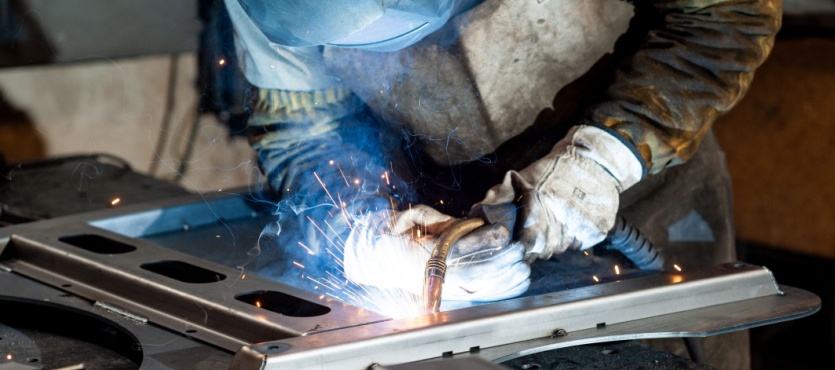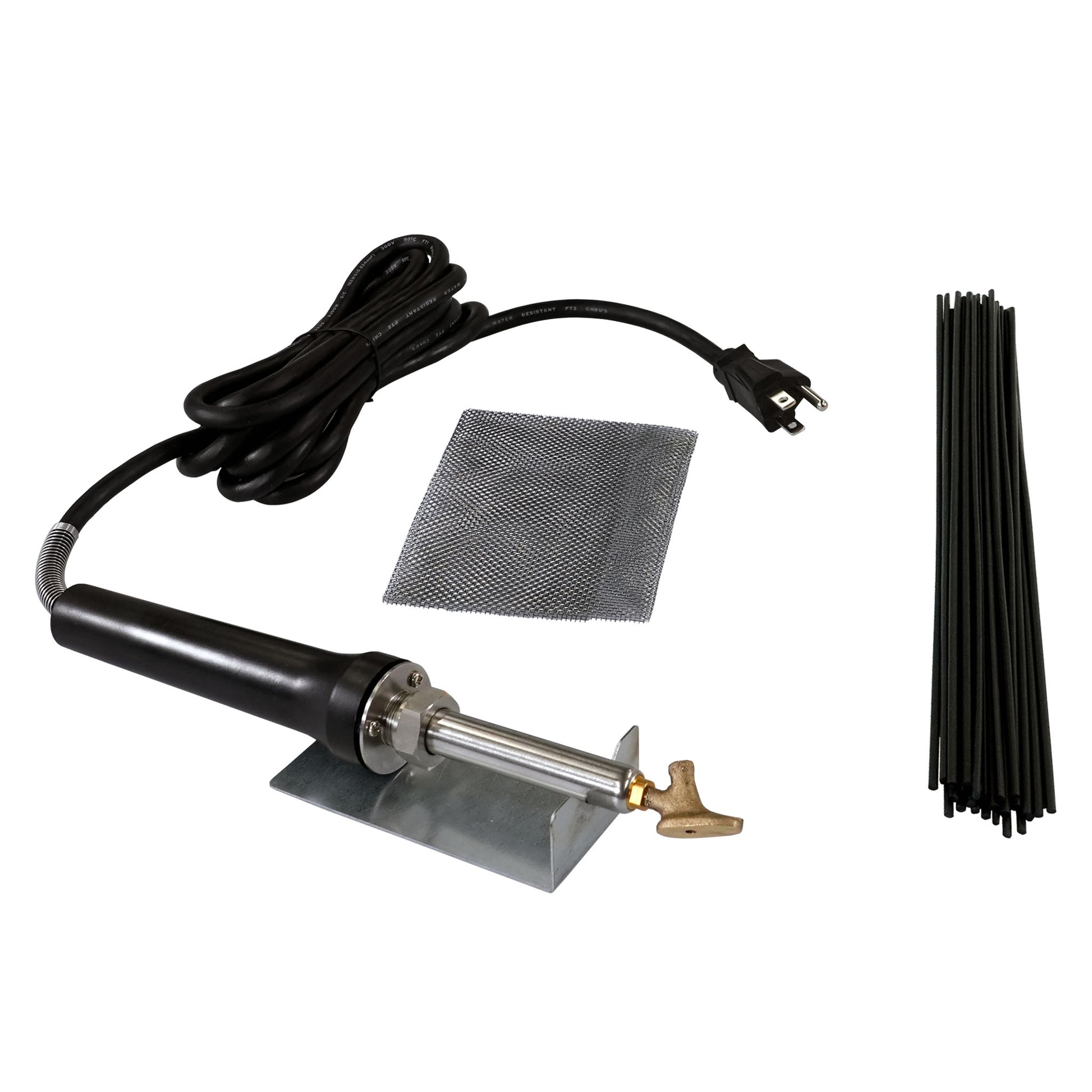Everything you should know about overheating prevention from Montana Mobile Welding and Repair
Common Welding Fixing Issues and Just How to Address Them Efficiently
Welding repair services frequently encounter an array of problems that can endanger the honesty of the last product. Common issues include poor infiltration, porosity, and misalignment, among others. Each flaw offers unique difficulties that call for particular strategies for resolution. Understanding these problems is necessary for welders intending to enhance their abilities and end results. This discussion will check out these common welding repair service concerns and effective methods to address them.
Inadequate Penetration
Inadequate infiltration takes place when the weld steel stops working to completely fuse with the base product, resulting in weak joints and potential architectural failures. This concern typically stems from inadequate heat input, wrong electrode angle, or improper welding speed. Welders might come across insufficient penetration due to a mistake of the necessary parameters for a details product thickness or kind. Additionally, contamination on the base material's surface area can hinder reliable bonding, aggravating the problem. To attend to poor penetration, welders ought to assure ideal setups on their equipment and keep a tidy job surface. Normal examination of welds is advised to recognize any deficiencies early, allowing for timely improvements and the avoidance of jeopardized architectural stability in welded settings up.
Porosity
Porosity is a common defect in bonded joints that manifests as small gas bubbles entraped within the weld metal. This issue can compromise the honesty of the weld, bring about minimized stamina and possible failing under anxiety. Montana Mobile Welding and Repair Belgrade Fabrication. Porosity generally occurs from contamination, dampness, or improper welding strategies, which enable gases to escape right into the liquified weld swimming pool. To address porosity, welders need to guarantee proper surface preparation, preserve a tidy workplace, and utilize ideal welding parameters. In addition, choosing the appropriate filler product and protecting gas can mitigate gas entrapment. Routine inspection and screening of welds can aid identify porosity early, ensuring prompt rehabilitative activities are taken, thus preserving the quality and reliability of the bonded framework
Imbalance
Imbalance in welding can emerge from different aspects, including improper configuration and thermal development. Understanding the origin is vital for reliable resolution. Numerous adjustment methods are available to straighten components and ensure architectural honesty.
Reasons for Misalignment
Welding misalignment typically comes from a range of underlying issues that can compromise structural stability. One key cause is inappropriate fit-up of elements before welding, which can cause spaces and unequal surfaces. Variants in thermal growth during the welding process can additionally result in distortion, particularly if the products being joined have various coefficients of expansion. In addition, poor fixturing and clamping might fall short to hold elements safely in position, causing activity throughout welding. Inadequately conserved equipment, including welding devices and tools, might present incongruities in the weld bead, more adding to imbalance. Driver error, stemming from inadequate training or experience, can also play a substantial function in creating misaligned welds.

Correction Methods Available
Resolving misalignment properly calls for a combination of corrective techniques tailored to the specific issues at hand. One usual method is the usage of fixtures or jigs to hold parts in the appropriate setting during welding, making certain consistent placement. Furthermore, pre-heating the materials can help in reducing distortion and boost fit-up. For considerable imbalance, mechanical realignment methods, such as using hydraulic jacks or clamps, can be utilized to deal with the setting prior to welding. Post-weld warmth treatment may additionally be required to eliminate stresses triggered by imbalance. Mindful inspection and adjustment during the configuration stage can protect against misalignment concerns from ending up being substantial troubles, advertising a smoother welding process and improving general architectural stability.
Distortion
Distortion is an usual obstacle in welding that can develop from numerous aspects, consisting of uneven heating & cooling. Recognizing the reasons of distortion is necessary for executing reliable prevention methods. Addressing this problem not just improves architectural stability yet additionally enhances the overall top quality of the weld.
Root causes of Distortion
When subjected to the extreme heat of welding, materials often undergo modifications that can result in distortion. This phenomenon primarily develops from thermal expansion and tightening throughout the welding procedure. As the weld location warms up, the material expands; upon air conditioning, it gets, which can produce inner stress and anxieties. Additionally, uneven home heating throughout a work surface can exacerbate these stress and anxieties, leading to warping or bending. The sort of product additionally plays a considerable function; steels with varying thermal conductivity and coefficients of development might react in a different way, resulting in uncertain distortions. In addition, inadequate joint style and inadequate fixturing can add to misalignment throughout welding, boosting the possibility of distortion. Comprehending these reasons is essential for reliable welding repair work and avoidance strategies.
Avoidance Techniques
Reliable avoidance strategies for distortion during welding emphasis on controlling heat input and guaranteeing proper joint design. Preserving a constant warmth input aids to lessen thermal growth and tightening, which can bring about distortion. Making use of strategies such as preheating the workpiece can likewise reduce the temperature gradient, advertising uniform heating. Furthermore, choosing ideal joint layouts, such as T-joints or lap joints, can enhance security and lower stress and anxiety focus. Carrying out correct fixturing to secure the work surfaces in position even more help in preserving placement during the welding process. Ultimately, staggered welding series can distribute heat a lot more uniformly, avoiding localized distortion. By applying these methods, welders can substantially decrease the probability of distortion and enhance the overall high quality of their welds.
Splitting
Cracking is an usual problem run into in welding repair work, frequently arising from various variables such as incorrect air conditioning prices, product option, or inadequate joint prep work. The event of cracks can substantially compromise the honesty of the weld, causing potential failings during operation. To resolve this problem, welders should first assess the source, making sure that materials work and properly chosen for the specific application. Furthermore, controlling the cooling rate throughout the welding procedure is necessary; rapid air conditioning can generate anxiety and cause breaking. Correct joint style and prep work likewise add to decreasing the risk. Carrying out these approaches can enhance weld top quality and durability, ultimately lowering the probability of fracturing in finished weldments.

Insufficient Combination
A significant issue in welding fixings is incomplete fusion, which takes place when the weld steel does not sufficiently bond with the base material or previous weld passes - Montana Mobile Welding and Repair Belgrade. This flaw can result in weak points in check here the joint, potentially endangering the stability of the welded framework. Elements adding to insufficient fusion include inadequate heat input, inappropriate welding method, and contamination of the surface areas being signed up with. To address this problem effectively, welders should guarantee appropriate pre-weld cleaning and surface area preparation, in addition to readjust their welding specifications to achieve adequate penetration and fusion. Routine inspection throughout the welding procedure can also help determine insufficient combination early, enabling timely corrective actions to enhance the total top quality of the weld
Overheating
While welding fixings can enhance structural stability, overheating presents a considerable challenge that can bring about material destruction. Excessive warmth during welding can change the mechanical residential properties of metals, leading to reduced stamina, enhanced brittleness, and warping. This phenomenon is especially vital in high-stress applications where architectural integrity is critical. Determining overheating can involve visual inspections for discoloration or distortion, along with monitoring temperature level during the welding procedure. To reduce the dangers associated with getting too hot, welders ought to use proper techniques, such as managing heat input, adjusting travel rate, and utilizing ideal filler products. Additionally, implementing pre- and post-weld heat treatments can aid restore product homes and enhance the overall top quality of the fixing, making certain long-lasting efficiency and security.
Often Asked Concerns
What Are the Usual Indicators of a Welding Flaw?

Just How Can I Test My Welds for Top quality?
To evaluate welds for quality, one can utilize aesthetic assessments, ultrasonic testing, and radiographic approaches. Each method assures architectural stability, determines issues, and confirms adherence to specified standards, ultimately enhancing the dependability of the welded joints.
What Safety and security Safety Measures Should I Take While Welding?
When welding, one need to focus on safety by using proper individual safety devices, making sure proper air flow, securing flammable products away, preserving a tidy office, and being conscious of environments to avoid crashes and injuries.
Can I Repair a Weld Without Renovating the Entire Joint?
Repairing a weld without redesigning the whole joint is feasible, relying on the damages (Montana Mobile Welding and Repair). Strategies such as grinding, adding filler material, or utilizing a welding process can properly attend to details defects while maintaining the surrounding framework
What Tools Are Vital for Reliable Welding Repairs?
Necessary devices for efficient welding fixings consist of a welding machine, cord brush, grinder, safety equipment, clamps, and filler materials. Each tool plays an essential function in guaranteeing high quality and security during the fixing procedure. Porosity normally arises from contamination, moisture, or inappropriate welding strategies, which allow gases to run away right into the liquified weld pool. Poorly conserved tools, consisting of welding machines and devices, may present variances in the weld bead, further adding to misalignment. When subjected to the intense heat of welding, materials typically go through changes that can lead to distortion. Cracking is a typical issue come across in welding fixings, usually resulting from various elements such as improper cooling prices, product choice, or poor joint preparation. A considerable issue in welding repair services is incomplete blend, which occurs when the weld steel does not adequately bond with the base product or previous weld passes.